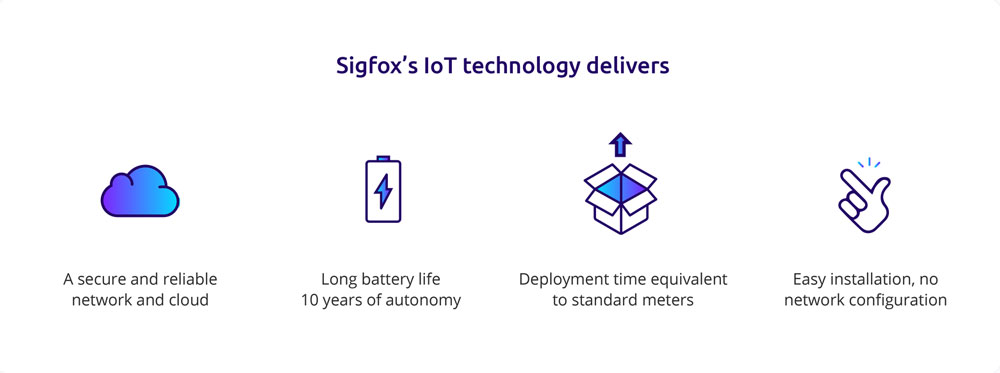WATER MANAGEMENT ENTERS THE AGE OF THE SMART CITY WITH SIGFOX 0G TECHNOLOGY
We have entered the age of the smart city. The Internet of Things (IoT) has become the norm, and urban areas are increasingly using new telemetry technologies to remotely and securely manage public assets. Utility companies are no exception. As water management systems age, and companies prepare to update their infrastructures, many have discovered the advantages of upgrading to long-range remote meter systems, such as Sigfox’s global IoT network. By connecting their water meters over Sigfox’s network, utility companies around the world have eliminated the need for onsite meter readings, saving time and resources and even improving customer satisfaction.

Long-range telemetry solutions connect water meters, save utility companies time and resources
Utility companies save manpower and lower costs with smart water meters
As any utility manager knows, dispatching staff to manually read water meters is both time consuming and a logistical headache. First-generation telemetry solutions have made a small difference by allowing utility companies to remotely read meters from short distances. But with ranges of only a few meters, these solutions still take considerable manpower, not to mention fuel and vehicle maintenance costs. Utility companies like Water-link which provides water management to 624,000 customers across Antwerp, Belgium have realized significant time and cost savings by switching to smart water meters. With their old, non-connected system, Water-link was only able to read meters annually. This process took nearly a month to complete. Searching for a better way, the company decided to install smart water meters across the city. Over the next four years, the utility company will connect 205,000 smart meters to Sigfox’s IoT network. By eliminating the need for onsite water meter readings, they will save nearly a month in manpower.
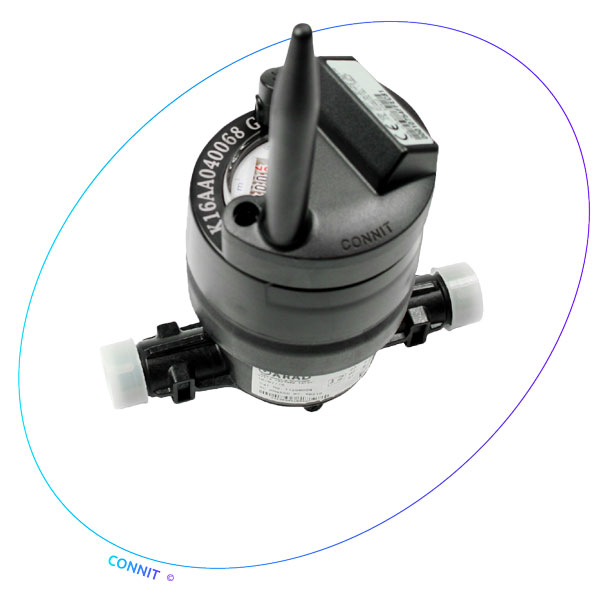
Reductions in manpower, fuel and vehicle maintenance costs mean powerful savings for utility companies that upgrade to smart water meters. Long-range telemetry technology is simple to deploy, with no technician training or network configuration necessary. Installation time is equivalent to that of standard water meters. As a result, most utility companies encounter few barriers to deployment. Retrofitting current systems is also an option in situations where a full upgrade is not necessary. For most utility companies, especially those already in need of a system overhaul, this high return-on-investment makes the choice to switch an easy decision.
Better data helps utility companies manage resources and streamline maintenance workflows
It’s difficult to manage what you can’t measure. Because non-connected water meters only allow utility companies to gather point-in-time readings on a periodic basis, they provide a fairly limited amount of data about water usage patterns. Smart water meters, on the other hand, give companies access to a continuous stream of real-time information about water consumption patterns. Companies that invest in smart meters have found this real-time data helps them make more informed decisions about water management and resource allocation.
Smart water meters also give utility companies real-time alerts regarding outages, pipeline failures and leaks. This additional information allows companies to engage in early or preventative maintenance, catching problems before they become larger and more costly. All water management information is stored on a secure, reliable cloud-based network. It is accessible through web-based dashboards and customizable reports, making data gathering and analysis simple and efficient.
Sogedo, France’s fourth largest water distributor, successfully deployed smart water meters across its network using Sigfox’s IoT technology. Speaking to Metering and Smart Energy International, Nicolas Vivian, Sogedo’s technical director, noted how this solution increases the efficiency and performance of the company’s water management services.
Our partnership with Sigfox enables quick implementation of smart-utility features across our entire system, which will improve performance of water-service providers and make them more efficient and competitive.
NICHOLAS VIVIAN, Technical director of Sogedo.
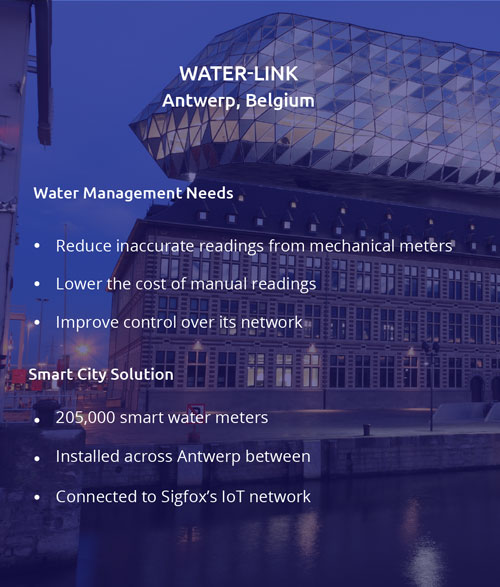
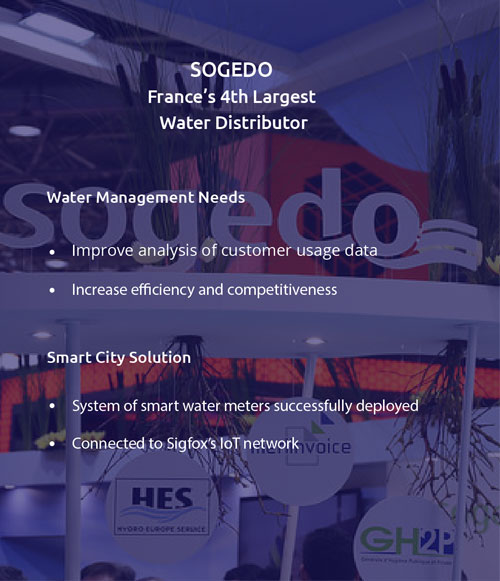
Long-range telemetry lets utilities remotely deactivate services
In many cases, the long-range telemetry technology in smart meters also allows utility companies to remotely activate and deactivate service for individual households. This in turn streamlines the service request process. Additionally, because water supplies can be remotely shut off or reduced in the event of customer nonpayment, utility companies are able to more easily recoup costs without the hassle of manual water shutoff.
In some situations, utility companies have even begun to offer prepaid options for customers, especially high-risk customers with a history of nonpayment. The real-time consumption monitoring and remote shutoff features of smart water meters make this possible, with customers and utility companies alike gaining greater control over the billing cycle.
Real-time water management data improves customer satisfaction and lowers consumption
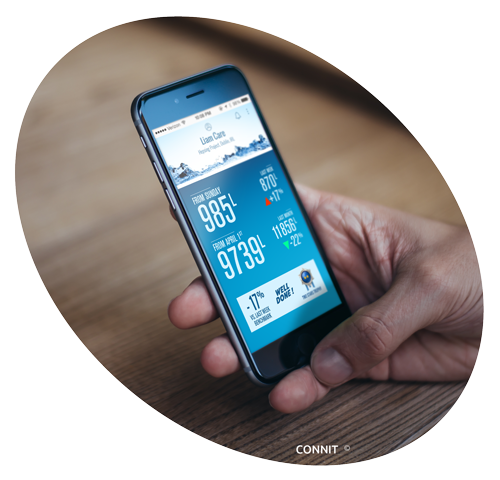
As an added benefit, utility companies that use smart meters for their water management are seeing improvements in customer satisfaction. With real-time data readily available, companies provide more transparent water bills, eliminating the surprise and dissatisfaction that comes with large bill regularizations. They can also proactively notify customers about leaks or pipe bursts, and more promptly respond to customer’s questions about their personal water usage.
Through customized dashboards, customers also have access to information about their own day-to-day water consumption. Better informed customers are more conscious about their water consumption and often make smarter, more environmentally conscious choices about that consumption.
